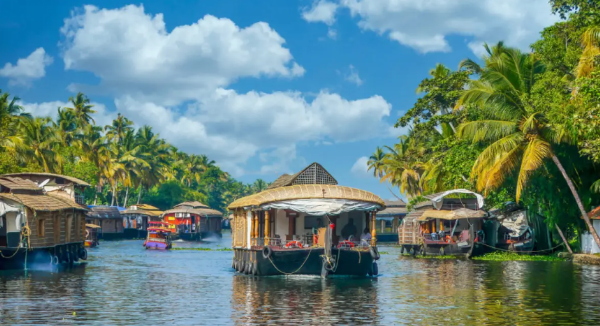Connecting India through inland waterways
17 Aug 2022 17:58:37
- Kinjal
Yogesh Dixit
India being a peninsular country
provides huge opportunity for effective waterway’s transportation.
The country is gifted with 14,500 kilometres of coastline, proving to be an
economical mode of transportation. The development of waterways is less
challenging than the development of roads or railways, as the issue of land
acquisition does not come into the picture.

The Parliament passed a law in order to
bring uniformity in rules and regulations pertaining to inland waterways and
their navigation. The law is aimed at developing India’s inland
waterways as a viable mode of transport, more so for cargo. The inland waterways network spreads across
nearly 15,000 km across rivers, channels, backwaters, creeks &
more.
In 2016, government
notified 111 inland waterways as National Waterways of India under the National
Waterways Act, 2016. Of these 111, 13 National Waterways are
operational for shipping and navigation and cargo / passenger vessels are
moving on them. Inland Waterways Authority of India (IWAI), a statutory
authority in charge of the waterways in India, is responsible for the timely
execution of national waterways projects and to ensure improved water
transportation in India.
“Based on the outcome of techno-economic feasibility and detailed project reports of the NWs completed, action plan has been formulated for 26 NWs which have been found viable for cargo/passenger movement," ports, shipping and waterways minister Sarbananda Sonowal said. The national waterways project intends to create such large-scale, commercial shipping and navigation systems in all these 111 waterways.
The IWAI under Ministry of Shipping, is
developing the National Waterways for commercial navigation. Govt aims at
promoting inland waterways especially as a mode for freight movement across
India. This supplement has been recognised worldwide as environmentally
friendly and economical, especially for cargo.
India’s inland waterways carry about 55 million tonnes of cargo every year. The movement currently includes the Ganga-Bhagirathi-Hooghly, Brahmaputra, Barak, rivers in Goa, the backwaters in Kerala, inland waters in Mumbai and the deltaic regions of Godavari-Krishna.
The speed of development for inland
waterways has been incredible. The development work has started on 13 of 26
national waterways that have been found feasible for cargo / passenger
movement.
Also Read | Govt to develop Paradip
Port into world-class port at cost of Rs 3,000 cr
Civilian travel through inland
waterways implies passenger transportation using inland vessels on any
waterway, including NWs. Infrastructure developed on NWs with
navigational facilities & terminals/jetties may also be used by
ferry/tourist vessels.
Financial assistance for building of passenger jetties & infrastructure facilities on waterways in Karnataka has been approved under Sagarmala scheme. The cargo movement of 108.79 million metric tonne (MMT) by inland water transport through NWs has been recorded during 2021-22.
Moreover, a brand-new ship-building
facility of Hooghly Cochin Shipyard Ltd (HCSL) was dedicated to the nation at
Nazirgunge, Howrah, West Bengal by Sarbananda Sonowal, minister of port,
shipping and waterways this week.
The Rs 180 crore facility, is expected
to give a great impetus to water transport connectivity to the North-Eastern
states. HCSL will be a boost in meeting requirements of new generation, high
technology, green vessels to provide further growth in the inland water
transport along the national waterways.
The yard will not just enable economic
development in close region but will also provide direct / indirect employment
as well as the development of MSMEs and ancillaries.
NW-1 covers Ganga-Bhagirathi-Hooghly for a length of 1,620 km covering UP, Bihar, Jharkhand, West Bengal while NW-2 covers West Bengal, Assam, Arunachal Pradesh & Meghalaya. Jal Marg Vikas project is a Government of India initiative for capacity augmentation of shipping and navigation on NW-1. This would enable commercial navigation of 1500–2000-ton vessels in Phase 1.